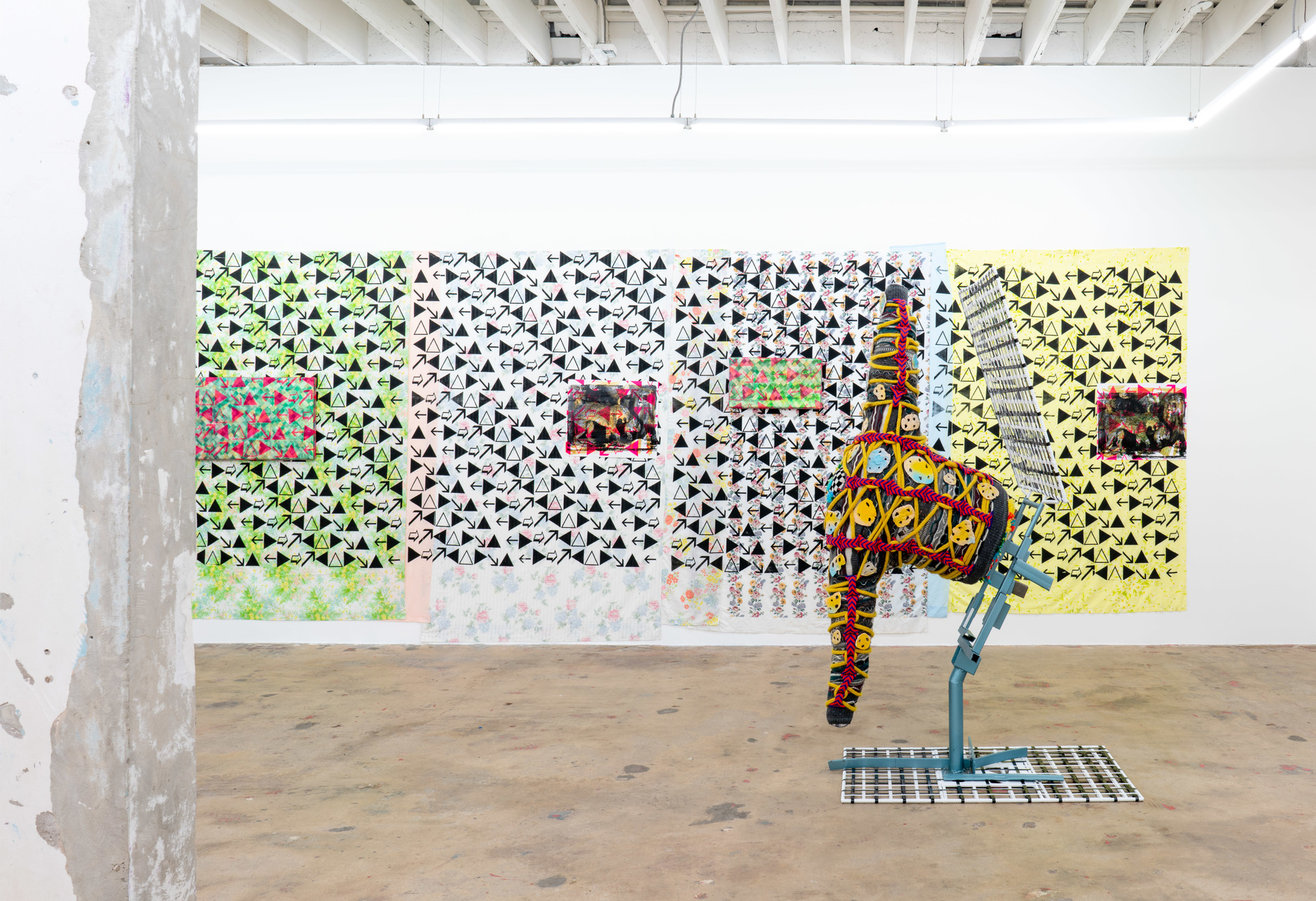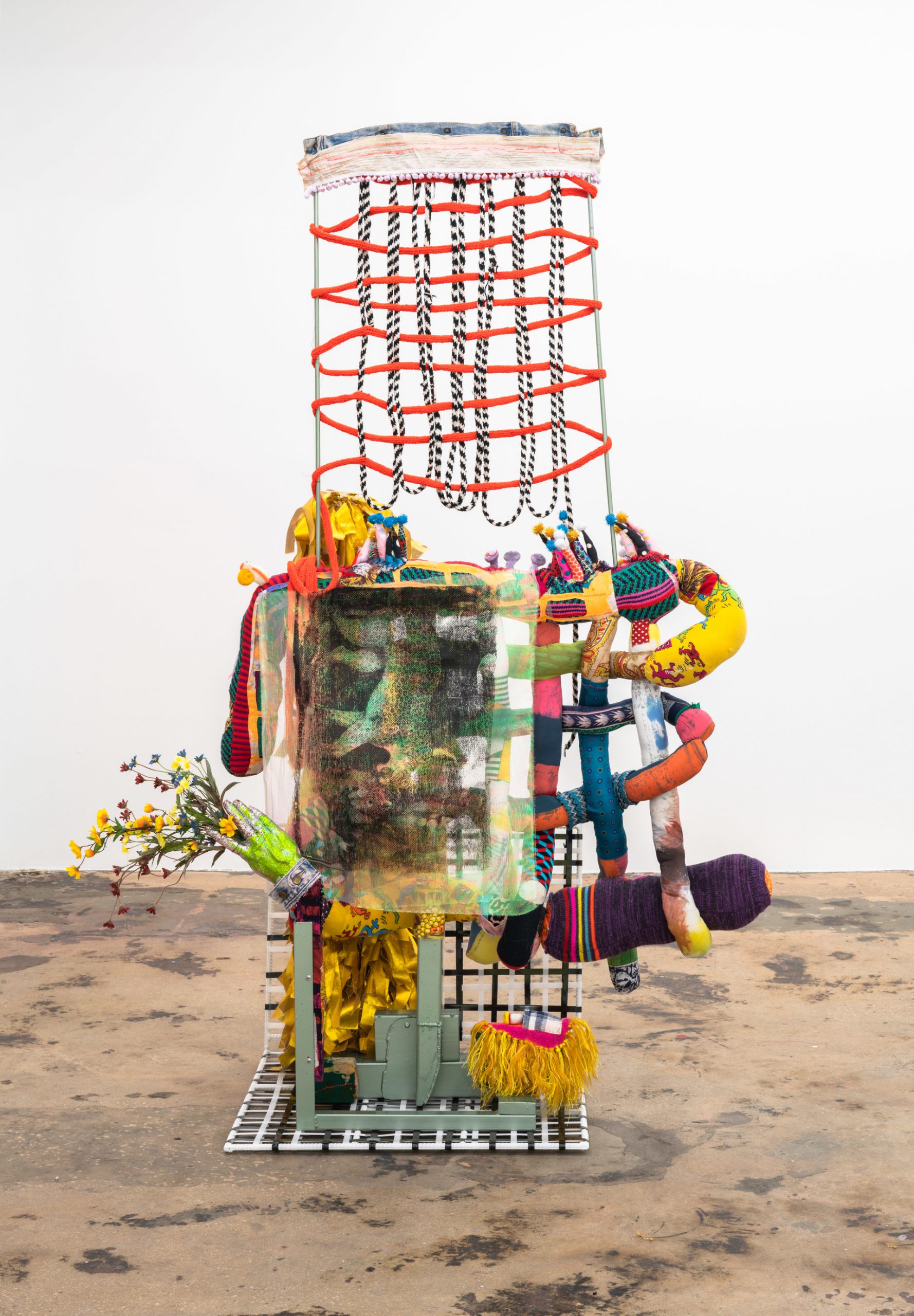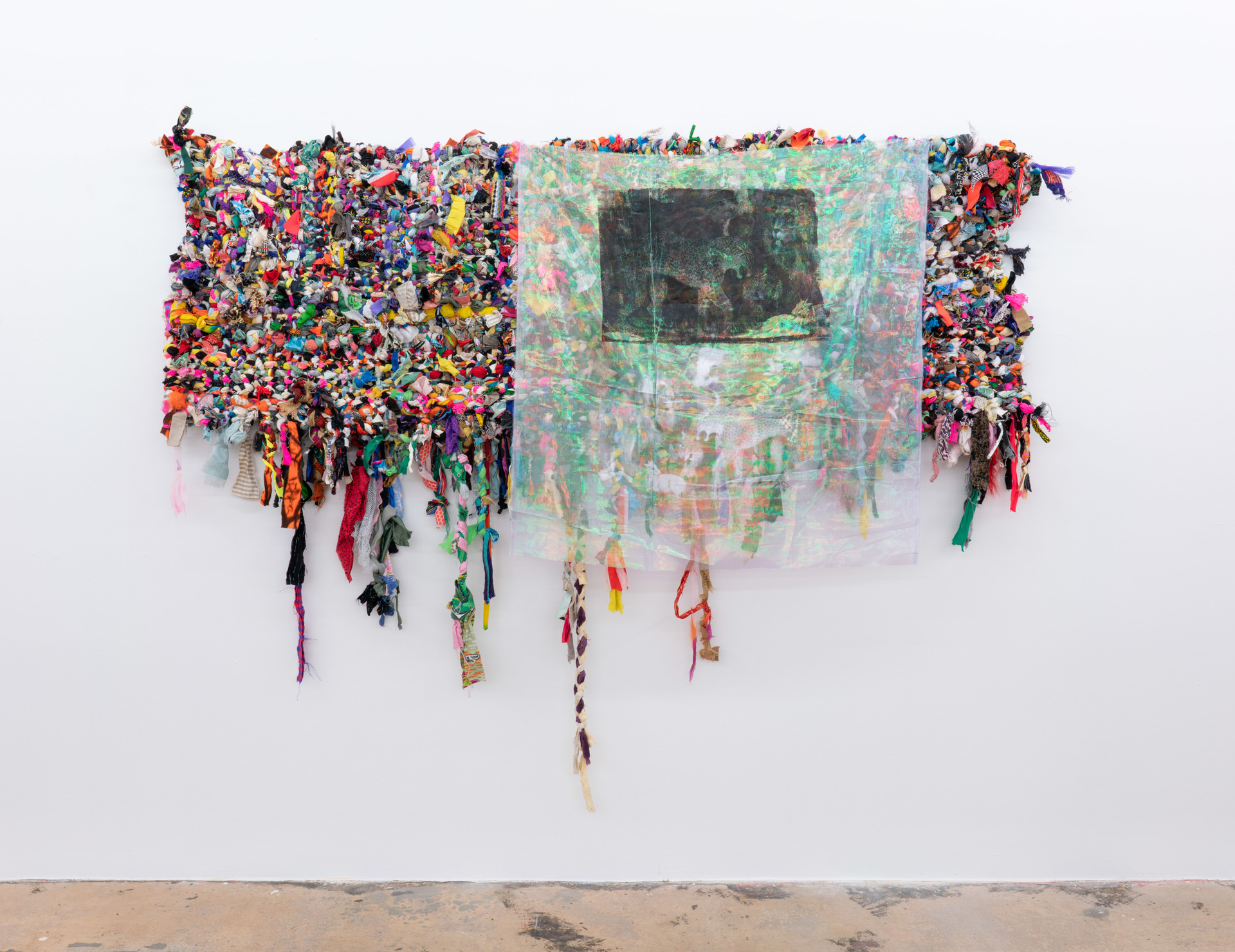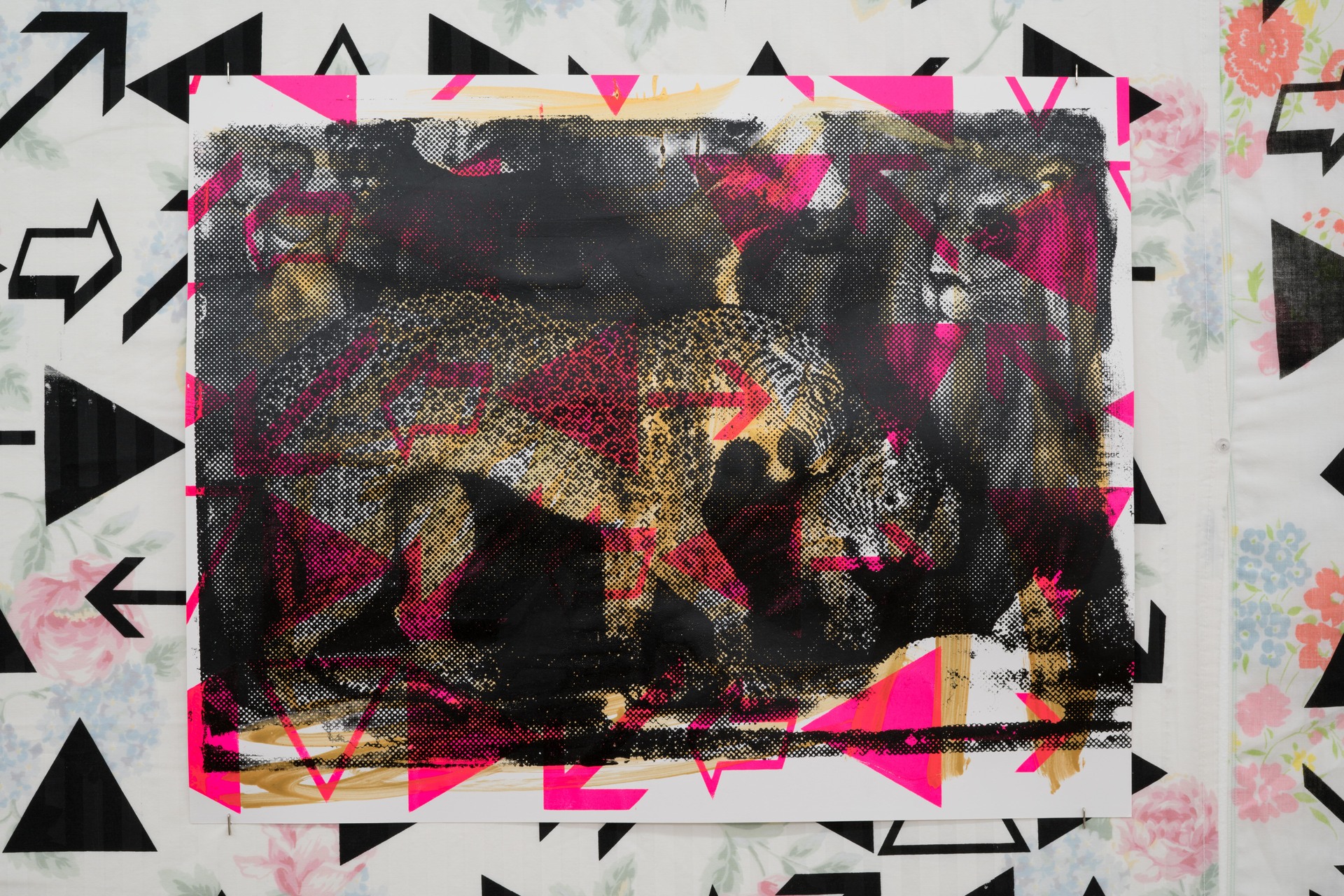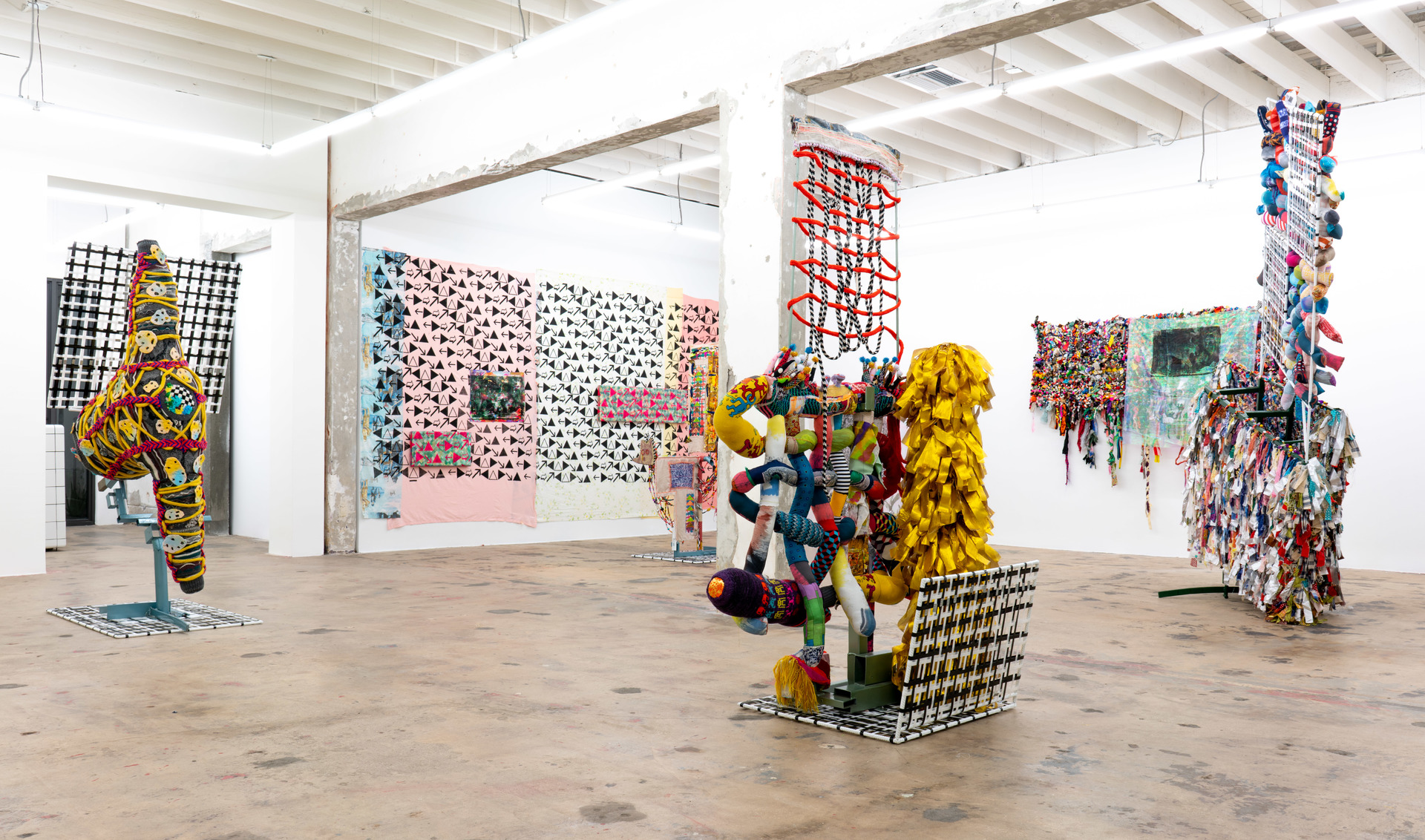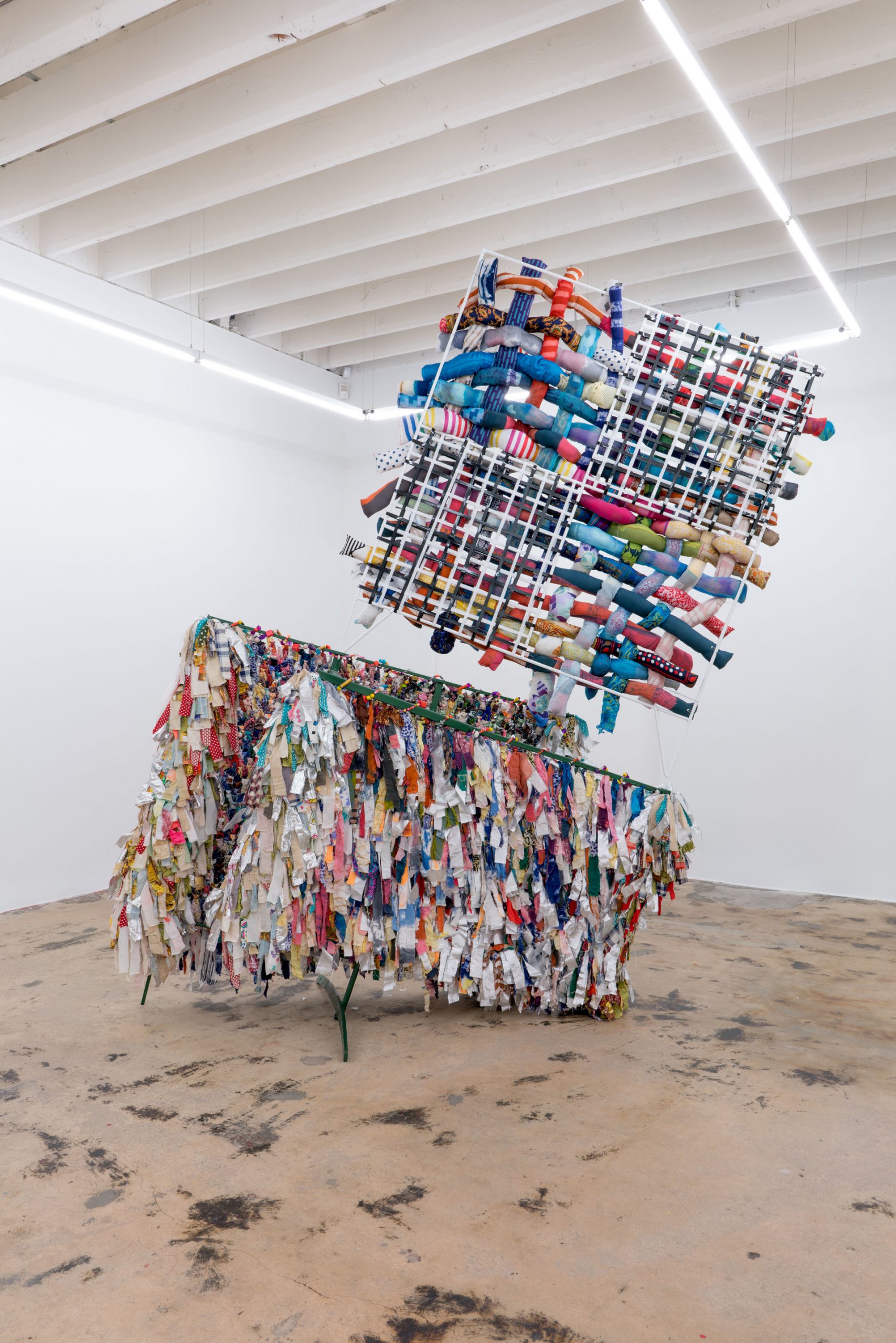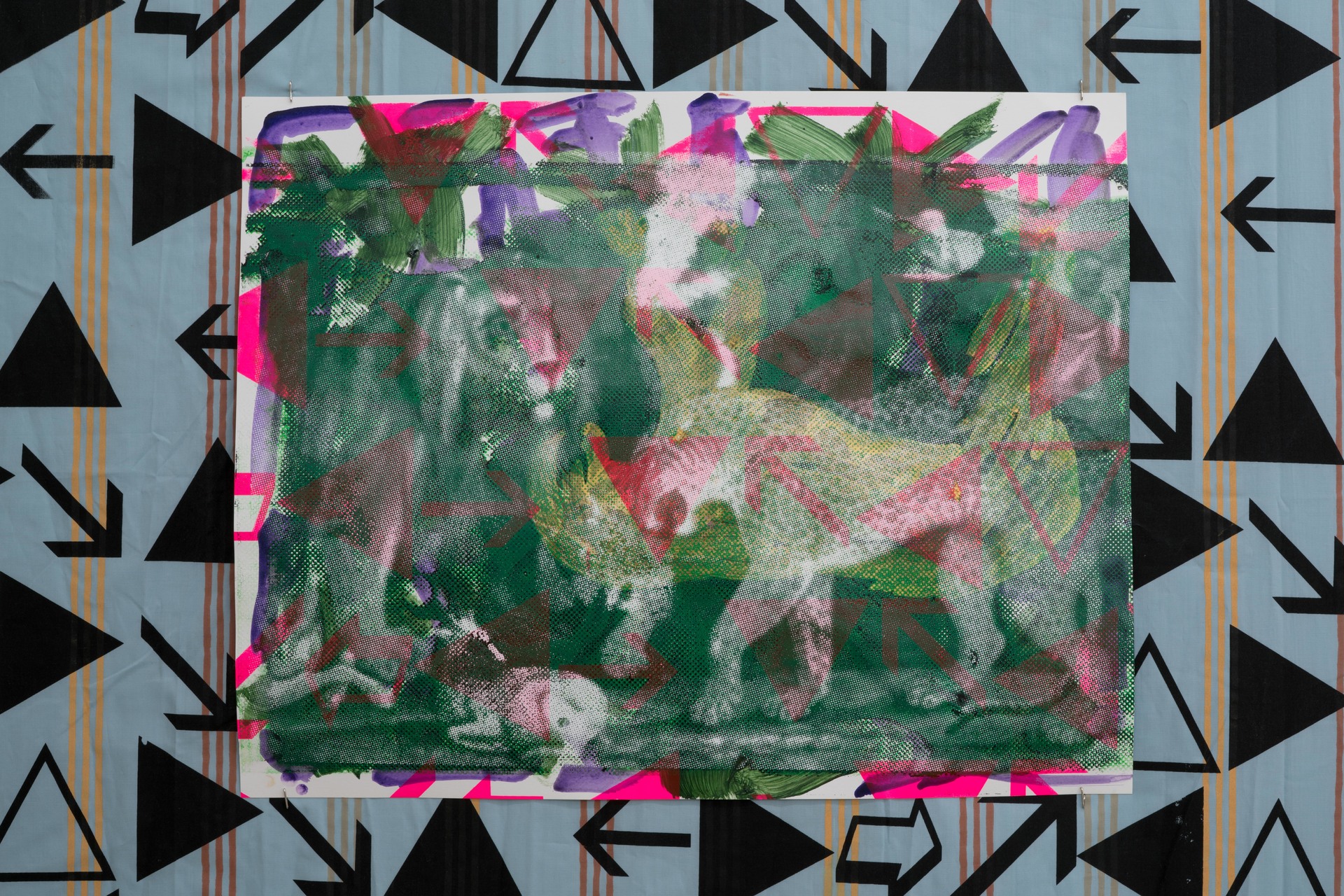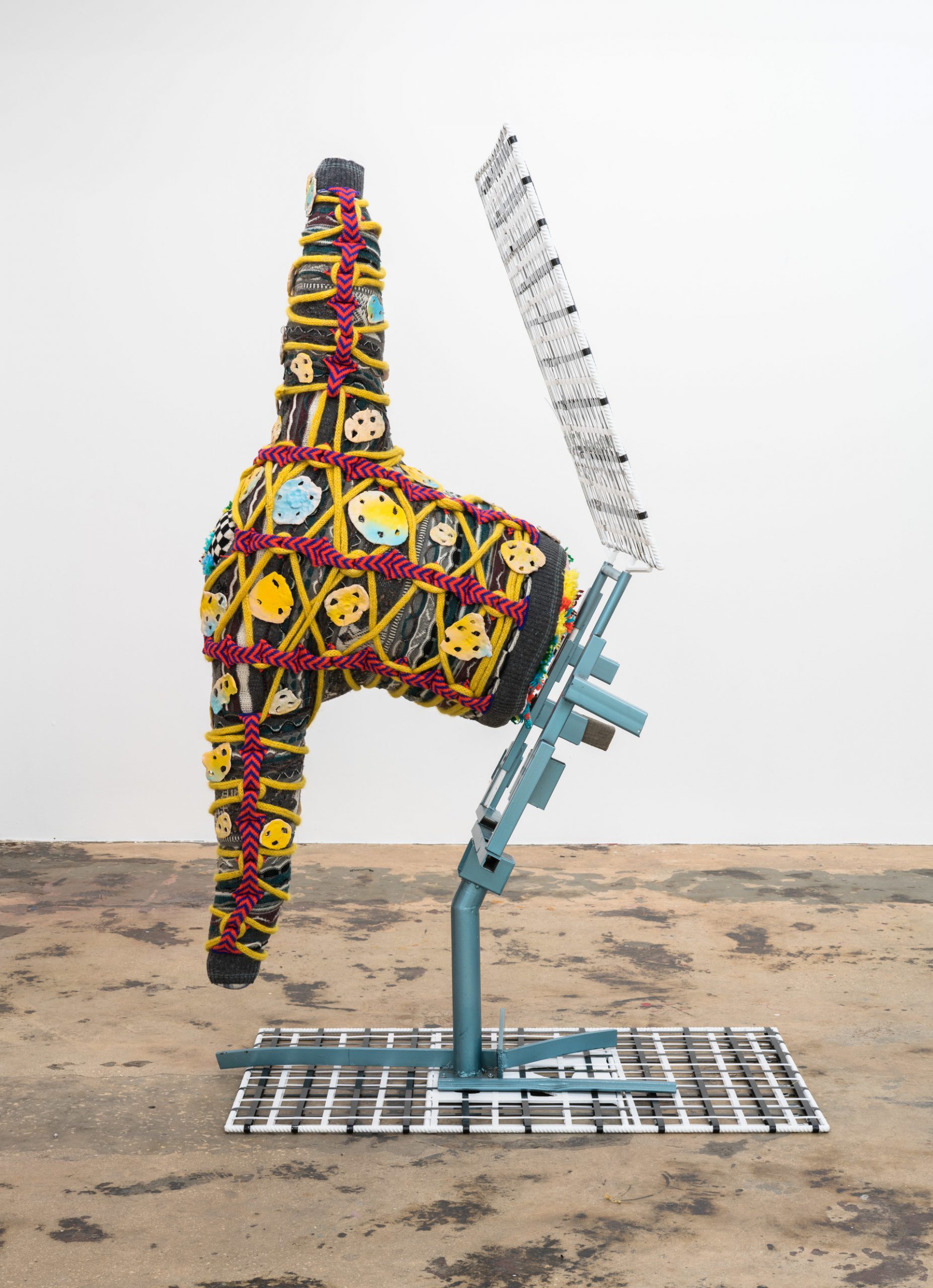Nina Johnson Gallery is proud to present Zapf Dingbats, an exhibition of new works by Jim Drain, opening with a public reception on December 3, 2018 from 7:30 PM to 9:30 PM, and remaining on view until January 5th. The exhibition will comprise sculptures, drawings, and wallpaper, furthering Drain’s explorations of disparate materials, as well as the history of assemblage, in order to emphasize the liberating potential of intuitive making. These works, which obliquely or explicitly engage the history of utopianism, come at a dark time in American history, and yet, they suggest something brighter, more inclusive.
At the center of the exhibition, four large sculptures feature curtain fabrics of cotton and silk Drain sourced from a now-shuttered store in downtown Miami, where he was based before leaving the city for Providence, Rhode Island. The brightly colored fabrics—aided by needle felting, beading, and appliqué—bring a carnivalesque feeling to the work, which also references the disposable materials of the country’s Walmarts and thrift stores. Yet in the bowerbird approach to found materials, their patterning and colors, they also evoke the work of the Utopian instincts of Russian Constructivism, and different American movements, such as the artists of Black Mountain College, and the Shakers.
Though each is supported by a welded steel frame, Drain’s signature mode of assemblage—which sees sculpture as a type of three-dimensional collage—allows the inherent qualities of the soft and hard materials to shift towards each other. To this dynamic blend of materials, Drain adds bits of previous sculptures he’s made over the past fifteen years, splicing together different periods of his practice, creating a pattern of disparate moments of time.
Drain pairs these sculptures with a series of flat woven paintings, which bring together one-inch strips of painted?cotton twill tape to create a textured and pixelated image. The wall paper is a lightly coded response to the politics of today. Inspired by his friendship with the late interior designer Jim Walrod, Drain used the pictographic font Zapf Dingbats to create?“Modernist Toile Wallpaper (for JW)” which, in its most basic unit, reads ←←??? ?????. These characters, typed using another font, read: FUCK TRUMP. In this gesture, which is quite literally symbolic, Drain reminds the viewer how protest can be smuggled within design and object-making.
But to what end? Drain’s interest in the Utopic is a generative response to the political and social turmoil brought to a fever pitch by the current presidential administration. Drain heard Junot Diaz speak in early 2017, where the Dominican-American writer urged to audience to flex their “utopia muscles” in the face of mounting dystopias. The artistic response to political urgency is bewitching. How can art truly be political, how can it evince social change? It is a vexing question, one fraught with impossibilities and unlikelihoods. Yet like the experimental impulse, the utopian drive—which has long been taken up by artists, writers, and believers—it is a challenge central to humanity.
